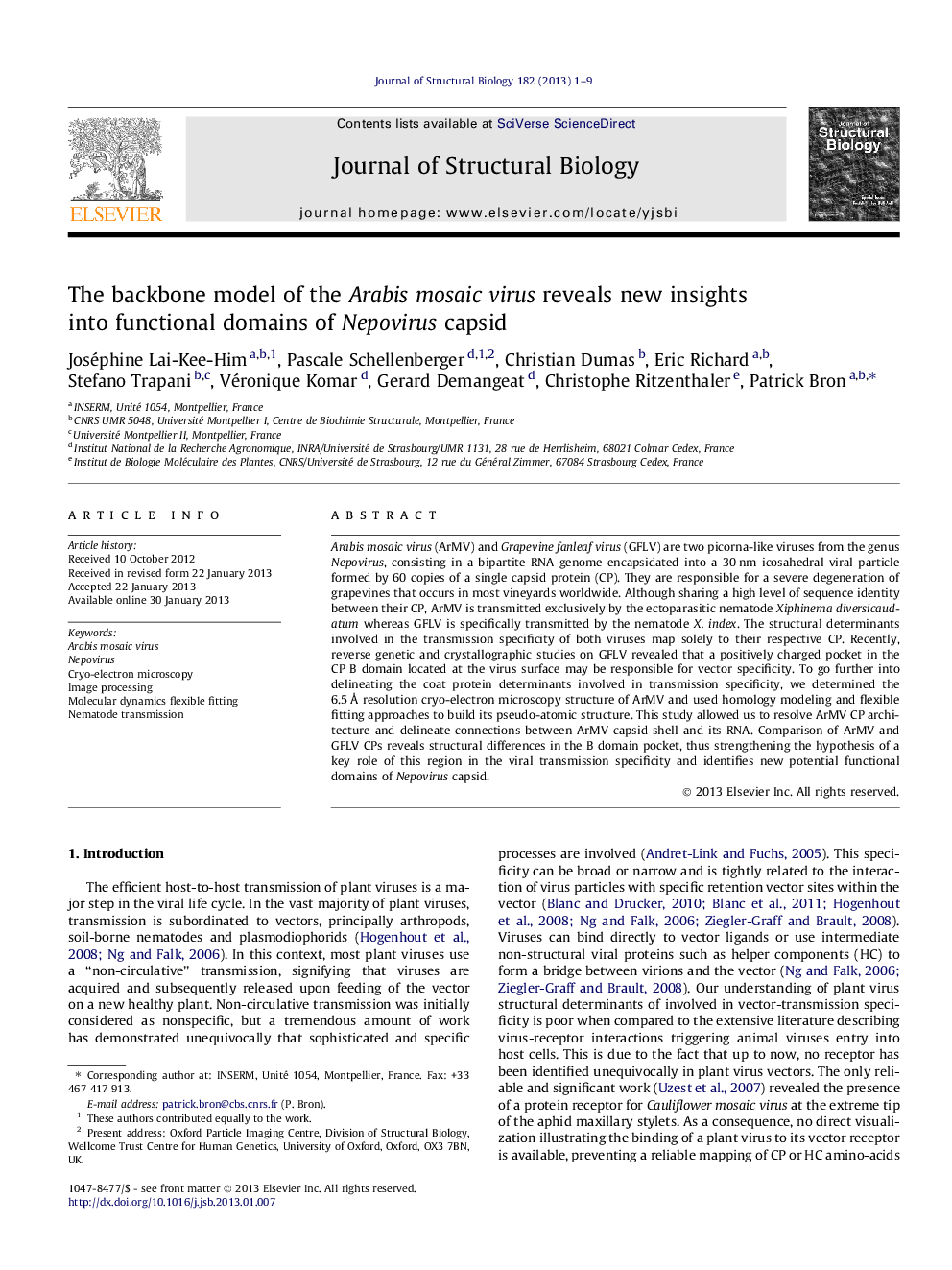| Article ID | Journal | Published Year | Pages | File Type |
|---|---|---|---|---|
| 5914276 | Journal of Structural Biology | 2013 | 9 Pages |
Arabis mosaic virus (ArMV) and Grapevine fanleaf virus (GFLV) are two picorna-like viruses from the genus Nepovirus, consisting in a bipartite RNA genome encapsidated into a 30Â nm icosahedral viral particle formed by 60 copies of a single capsid protein (CP). They are responsible for a severe degeneration of grapevines that occurs in most vineyards worldwide. Although sharing a high level of sequence identity between their CP, ArMV is transmitted exclusively by the ectoparasitic nematode Xiphinema diversicaudatum whereas GFLV is specifically transmitted by the nematode X. index. The structural determinants involved in the transmission specificity of both viruses map solely to their respective CP. Recently, reverse genetic and crystallographic studies on GFLV revealed that a positively charged pocket in the CP B domain located at the virus surface may be responsible for vector specificity. To go further into delineating the coat protein determinants involved in transmission specificity, we determined the 6.5Â Ã resolution cryo-electron microscopy structure of ArMV and used homology modeling and flexible fitting approaches to build its pseudo-atomic structure. This study allowed us to resolve ArMV CP architecture and delineate connections between ArMV capsid shell and its RNA. Comparison of ArMV and GFLV CPs reveals structural differences in the B domain pocket, thus strengthening the hypothesis of a key role of this region in the viral transmission specificity and identifies new potential functional domains of Nepovirus capsid.
